Crafting a Powerful Federal Job Cover Letter
Securing a federal job is a competitive process, and your cover letter is your first chance to make a strong impression. A well-crafted cover letter not only introduces you but also demonstrates your understanding of the position and your qualifications. Unlike private sector jobs, federal applications often require specific formats and content. This guide will walk you through the essential elements of a federal job cover letter, helping you stand out from the competition and increase your chances of getting hired. Understanding the nuances of federal application processes is critical for success. Let’s get started on the path to landing your dream federal role.
Understanding Federal Job Cover Letter Requirements
Federal job applications often have specific requirements. These may include detailed instructions on what to include in your cover letter, the length, and how to format it. Carefully review the job announcement to understand the agency’s expectations. Ignoring these requirements could lead to your application being immediately rejected. The job announcement is your guide – it will tell you what the hiring manager is looking for. Pay close attention to the keywords used in the job description, as you’ll need to integrate them into your letter to demonstrate your relevance. Also, federal jobs frequently require you to address specific qualifications or core competencies listed in the announcement.
Key Components of a Federal Cover Letter
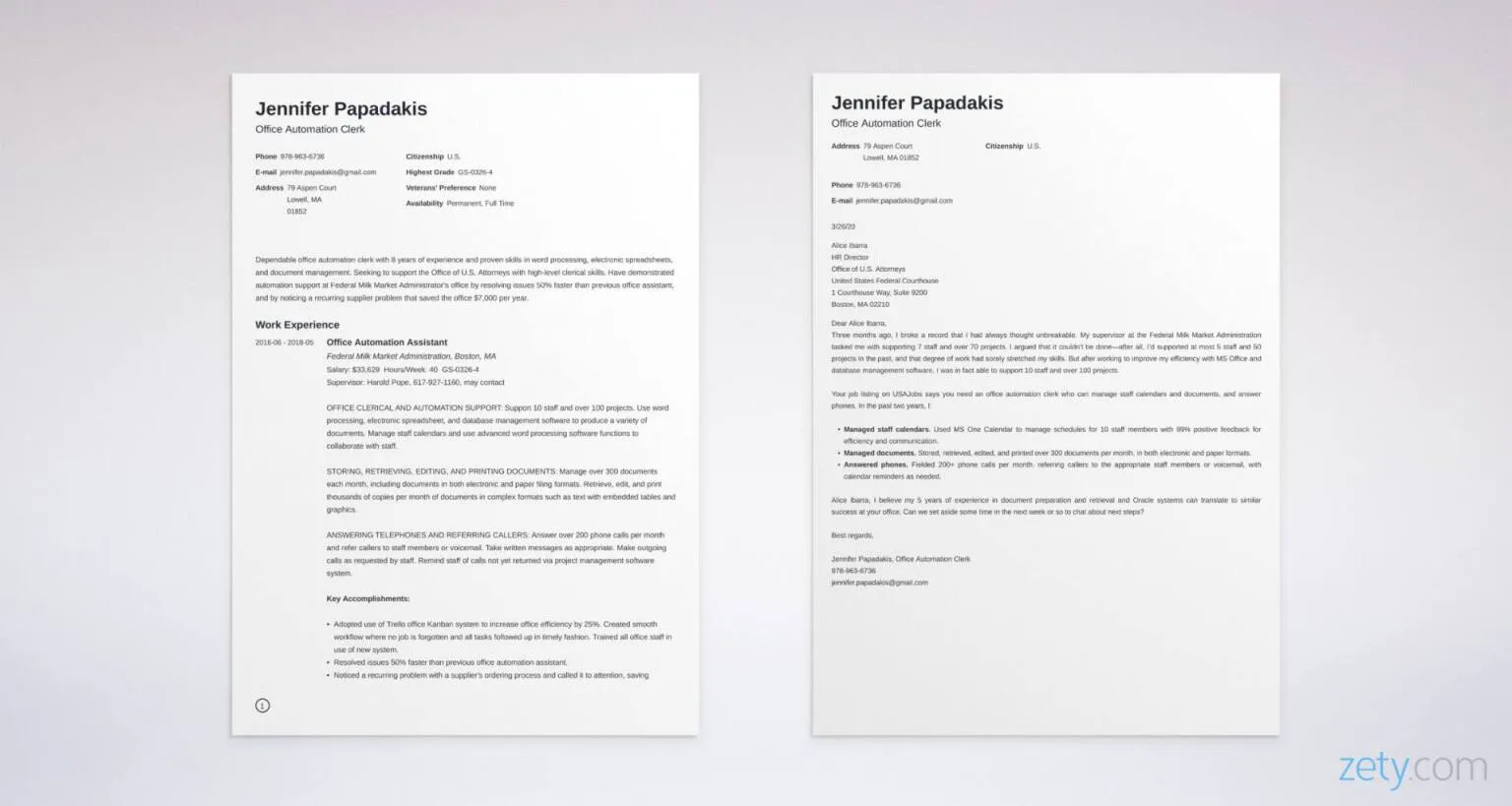
A strong federal cover letter includes several key components that work together to showcase your qualifications. Each section serves a specific purpose and contributes to your overall presentation. From the header to the closing, every detail matters. Federal hiring managers are looking for candidates who are detail-oriented and can follow instructions. Your cover letter needs to demonstrate your ability to communicate effectively, organize your thoughts, and present a compelling argument for why you are the best fit for the job. Ensure all of these components are included to make sure your cover letter works for you and help you get the job.
Header and Contact Information
Start with a professional header that includes your full name, address, phone number, and email. The header should be clean and easy to read. Make sure the contact information is current and accurate, as this is how the hiring manager will reach you. If you have a professional online presence, such as a LinkedIn profile, include the URL. It’s also a good idea to include the date and the agency’s address (if provided in the job announcement) just beneath your contact information. This establishes a professional tone right from the start and ensures the hiring manager has all the necessary details to contact you.
Addressing the Hiring Manager
Whenever possible, address your cover letter to a specific person. Research the hiring manager’s name and title. If you can’t find a specific name, use a professional salutation like ‘Dear Hiring Manager’. Avoid generic greetings like ‘To Whom It May Concern’. Addressing your letter to a specific individual shows that you’ve taken the time to research and shows extra care. This personal touch can make a significant difference in how your application is received. If a name is not available, make sure the title you use is accurate and professional.
The Opening Paragraph Strategy
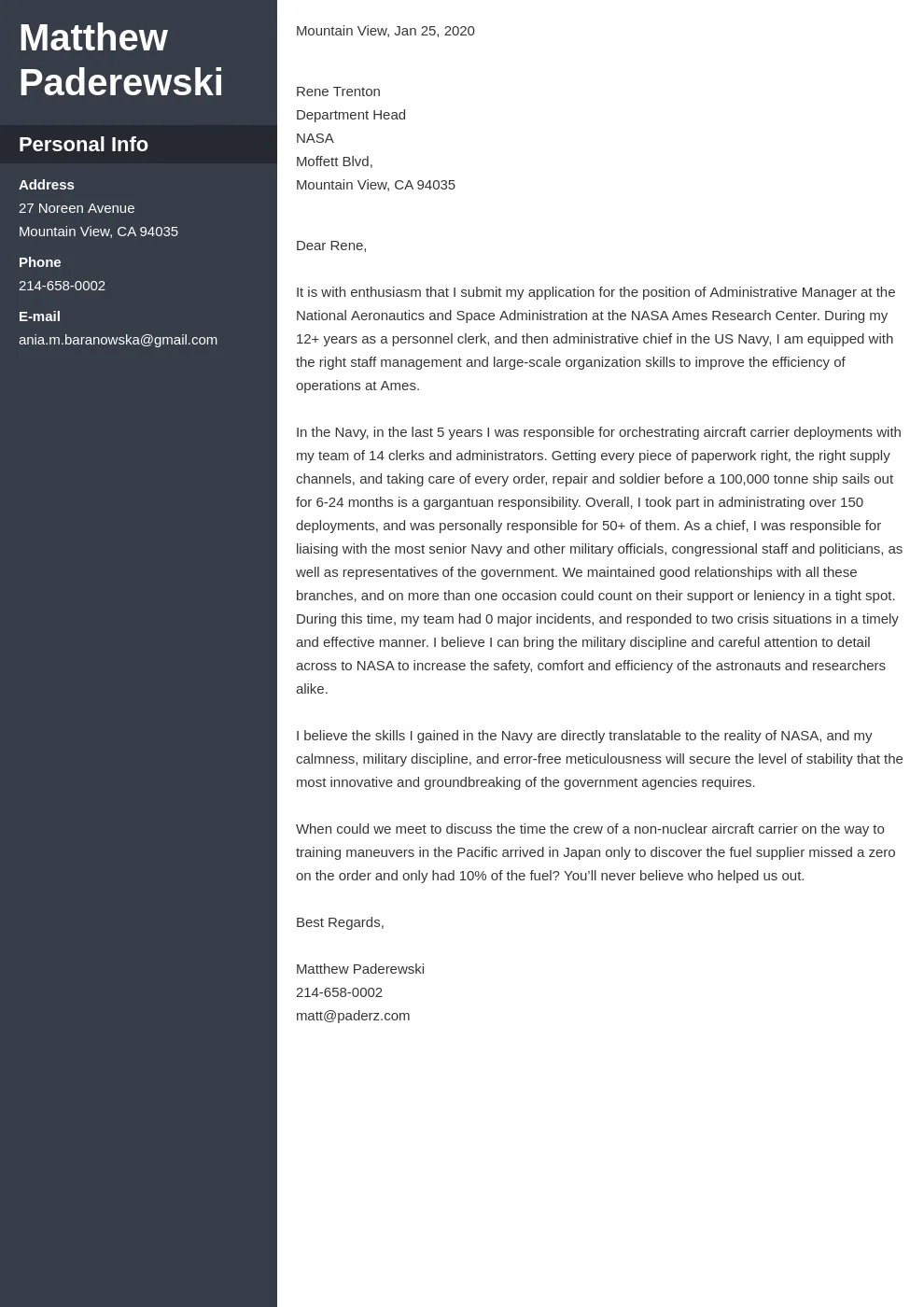
Your opening paragraph is your chance to grab the hiring manager’s attention. Clearly state the position you’re applying for and how you found the job announcement. Briefly mention your most relevant qualifications or skills. This should be concise and impactful. The goal is to immediately demonstrate your interest and suitability for the role. Consider mentioning a key accomplishment or a skill that directly aligns with the job requirements. This sets the stage for the rest of your letter and encourages the reader to continue. Your opening is your elevator pitch, so make sure it’s compelling and tailored to the specific job.
Highlighting Your Skills and Experience
The body of your cover letter should highlight your skills and experience in relation to the job requirements. Focus on the qualifications listed in the job announcement and provide specific examples that demonstrate your abilities. Use the STAR method (Situation, Task, Action, Result) to describe your experiences and accomplishments. This will provide concrete evidence of your capabilities. Provide specific examples of how you’ve used these skills to achieve results. Tailor each letter to the specific job and the particular agency to show your relevant background.
Showcasing Relevant Skills
Identify the key skills required for the position and explicitly state how you possess them. Don’t just list skills; provide evidence of how you’ve used them in the past. For example, if the job requires strong communication skills, provide examples of presentations you’ve given, reports you’ve written, or projects where you successfully communicated complex information. Use action verbs to describe your actions and responsibilities. This creates a vivid picture of your abilities and illustrates your competency. Match the skills listed in the job announcement and ensure that you address all essential requirements.
Quantifying Achievements
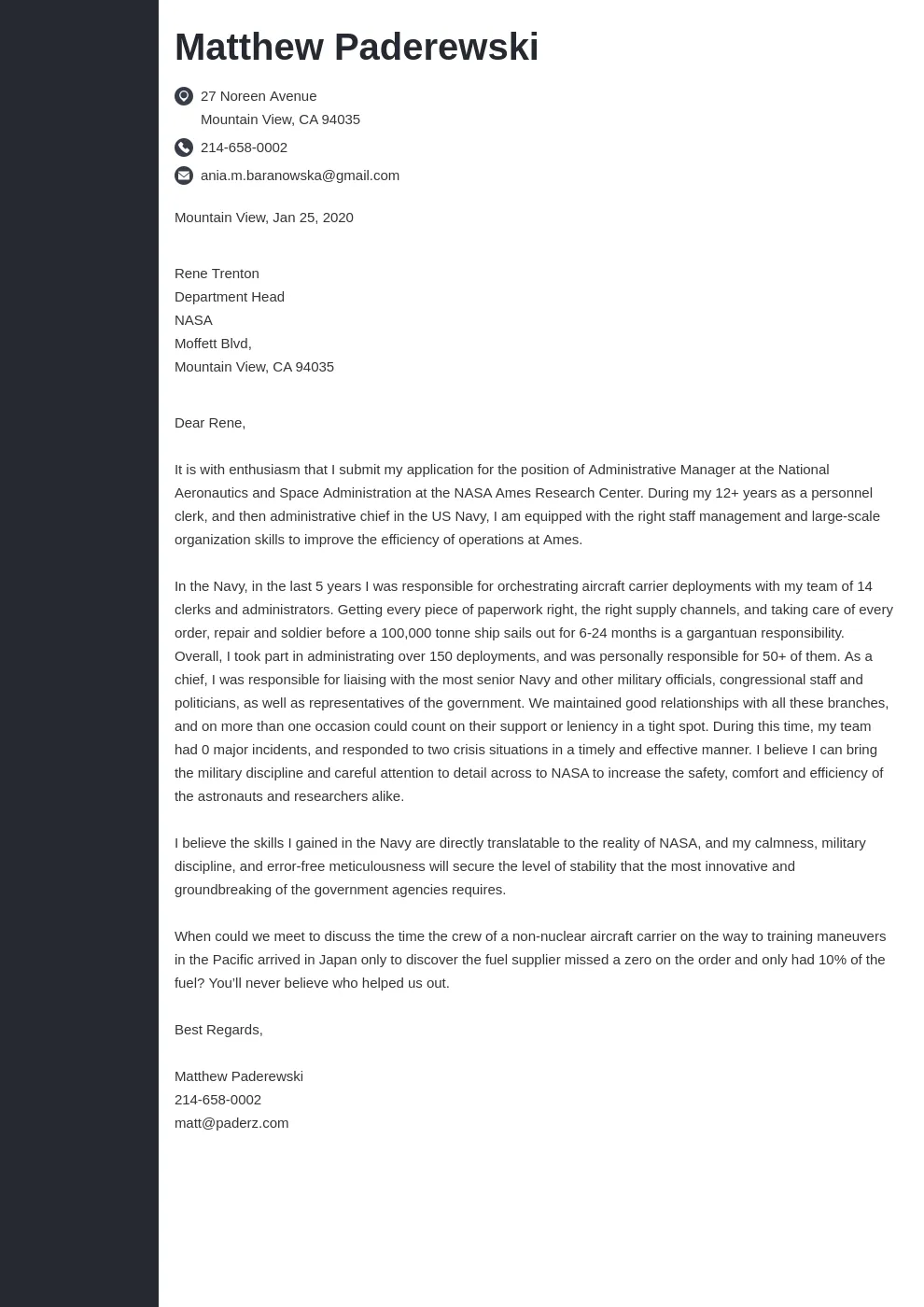
Whenever possible, quantify your achievements with numbers and data. Instead of saying you ‘improved efficiency’, state that you ‘increased efficiency by 15%’. Quantifiable results make your accomplishments more impressive and provide concrete evidence of your impact. Use metrics to demonstrate your effectiveness in previous roles. For instance, if you managed a project, specify the budget, timeline, and outcomes. Quantifying your achievements provides tangible evidence of your impact and gives the hiring manager a clear understanding of what you bring to the table. Using numbers will also set your cover letter apart from the crowd.
Tailoring Your Letter to the Job Announcement
Avoid using a generic cover letter. Customize your letter for each job application, paying close attention to the specific requirements and keywords in the job announcement. Responding directly to the needs outlined in the announcement is essential. Use the same language and keywords as the job description, as this helps the hiring manager quickly see that you’re a good fit. Highlight your skills and experiences that align with the stated requirements, and provide specific examples to support your claims. A tailored approach demonstrates that you’ve taken the time to understand the position and are genuinely interested in the job and the agency.
Using Keywords Effectively
Carefully review the job announcement for keywords and incorporate them naturally throughout your cover letter. Use the same terminology the agency uses to describe skills, responsibilities, and qualifications. This ensures that your letter is easily scannable and that you meet the requirements. However, don’t stuff your cover letter with keywords. Use them judiciously and make sure they fit naturally within the context of your writing. Using the right keywords will help your cover letter get noticed by applicant tracking systems (ATS) and hiring managers. They will highlight your most relevant skills and experiences.
Demonstrating Your Understanding of the Agency
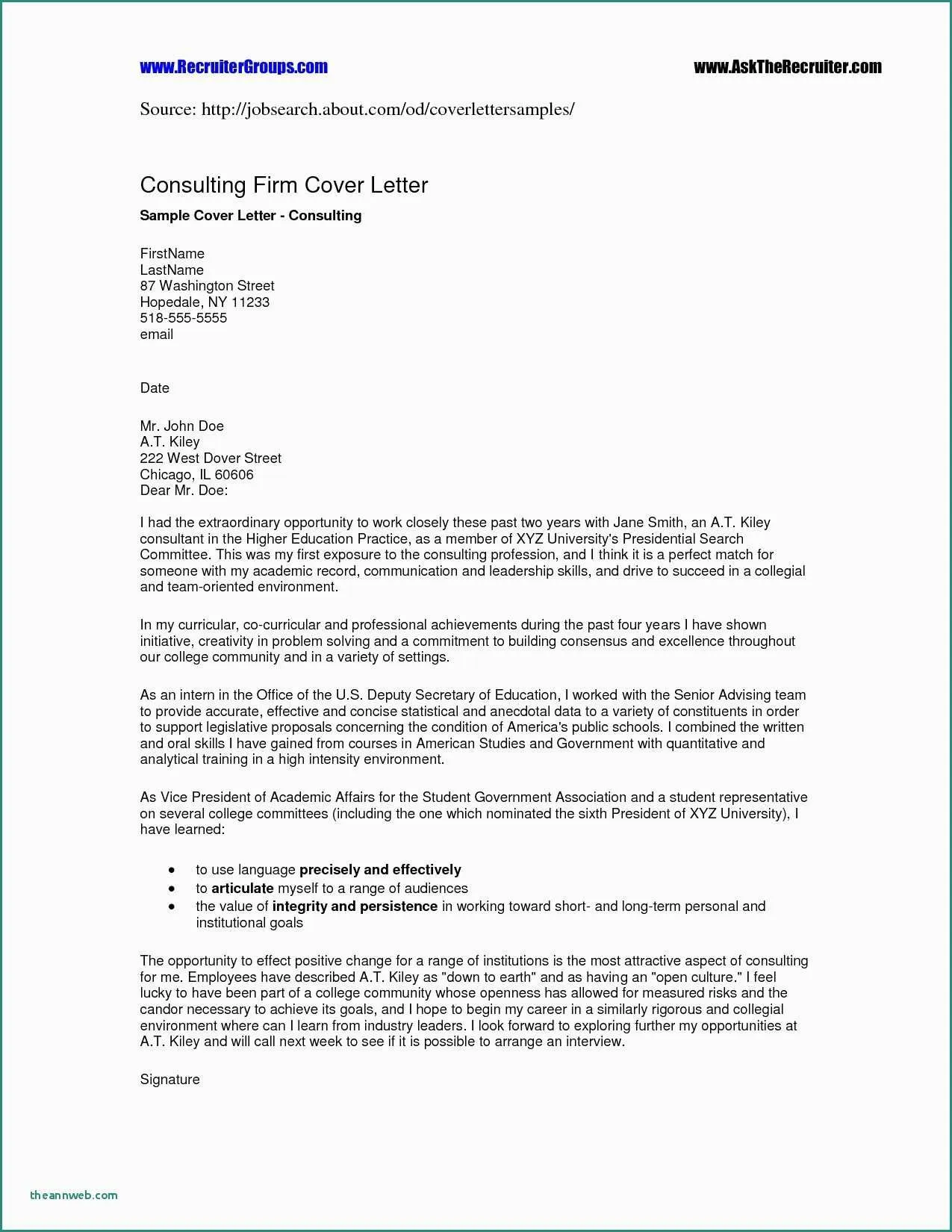
Show that you’ve researched the agency and understand its mission, values, and goals. Briefly mention why you’re interested in working for this specific agency and how your skills align with its objectives. Demonstrating this knowledge shows genuine interest and indicates that you’re not just applying for any job. Visit the agency’s website, read recent press releases, and review their strategic plans. This research will help you tailor your letter and show that you are the right candidate. Mentioning the agency’s specific goals demonstrates that you understand their mission and want to contribute to it.
The Closing and Call to Action
Your closing should reiterate your interest in the position and express gratitude for the hiring manager’s time and consideration. Make it clear that you are available for an interview and provide your contact information again. End with a professional closing, such as ‘Sincerely’ or ‘Respectfully’, followed by your full name. The closing should be professional and polite. Make sure you clearly state your contact information one last time, so the hiring manager can reach out to you quickly. Avoid any typos and make sure to double-check your letter one last time before sending.
Expressing Gratitude
Thank the hiring manager for considering your application. Expressing gratitude is a sign of professionalism and courtesy. It shows respect for their time and demonstrates your appreciation for the opportunity. A simple thank you reinforces your interest in the position and leaves a positive final impression. This final touch is a way of showing good manners, and it’s something that can make a big difference in your application.
Requesting an Interview
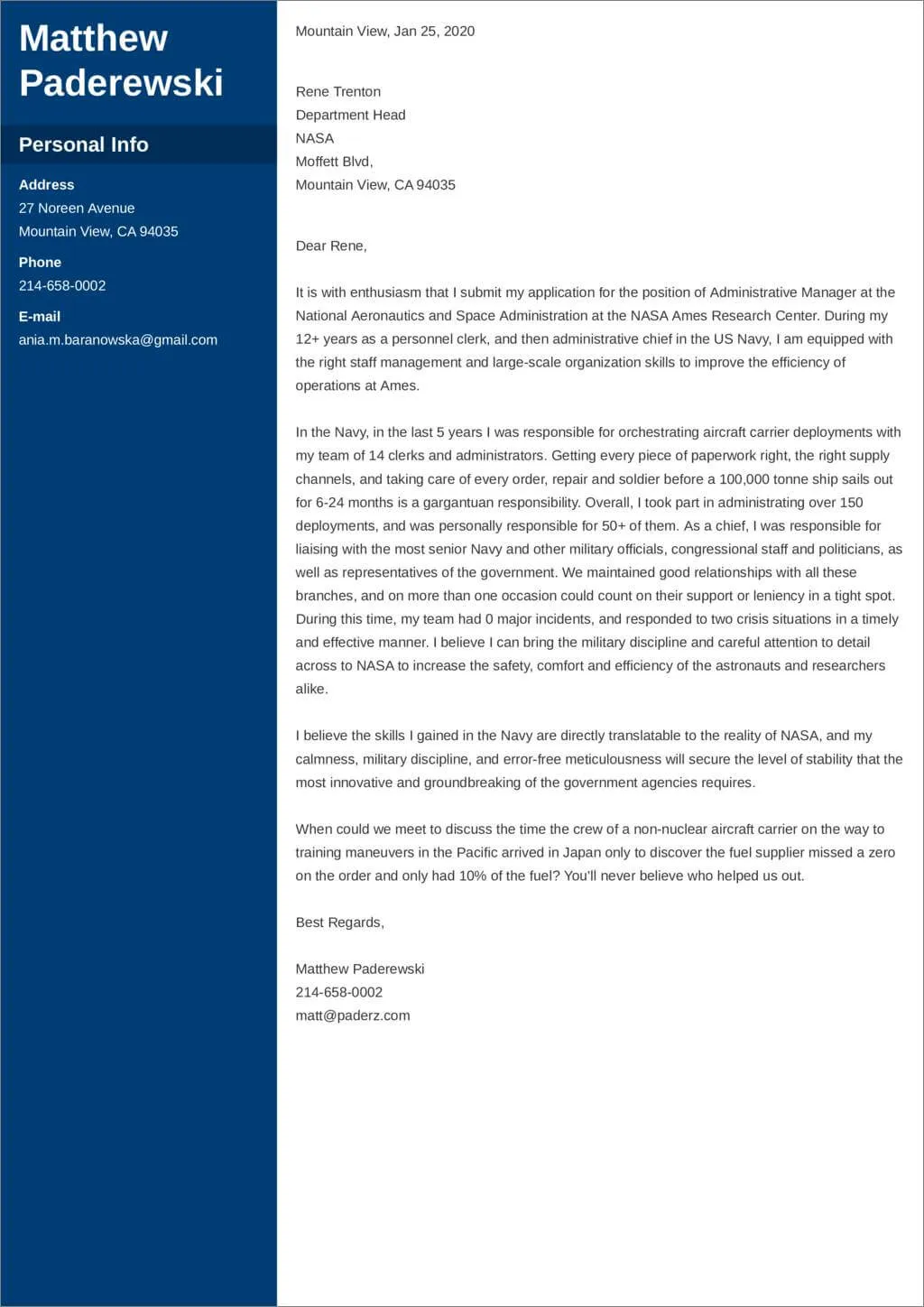
In your closing, clearly state that you’re available for an interview and provide your contact information. This makes it easy for the hiring manager to take the next step. This is a critical step in your cover letter to make sure they know you want the job. Make it as easy as possible for the hiring manager to reach you. Provide your phone number and email address. This provides the hiring manager a clear call to action.
Formatting and Proofreading
Formatting and proofreading are critical aspects of a professional cover letter. Ensure your letter is easy to read, well-organized, and free of errors. Poor formatting and grammatical mistakes can undermine your qualifications and damage your credibility. Taking the time to format and proofread your letter will show the hiring manager that you’re detail-oriented and professional. Make sure to follow the guidelines of the specific job posting when it comes to formatting. Your formatting will make sure your application stands out.
Font, Margins, and Layout
Use a professional and readable font, such as Times New Roman, Arial, or Calibri. Maintain standard margins (1 inch on all sides). Keep your layout clean and uncluttered, with sufficient white space. Use clear headings and subheadings to guide the reader. Ensure your letter is no more than one page long. The font and layout should be readable and easy to understand. A cluttered, unreadable layout can make it hard for the hiring manager to read and comprehend your letter, which would lower your chance of getting hired.
Proofreading for Errors
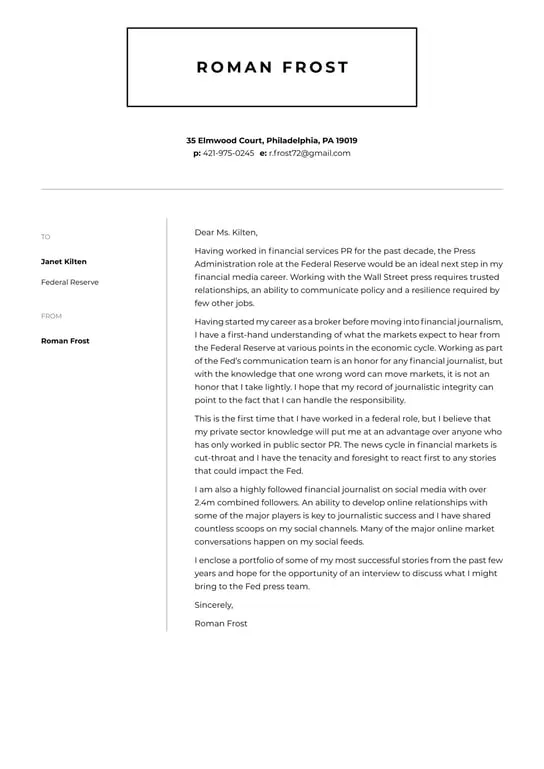
Carefully proofread your cover letter for any errors in grammar, spelling, punctuation, and word usage. Mistakes can create a negative impression and undermine your credibility. Use spell check and grammar check tools. Consider having a friend or colleague review your letter for a fresh perspective. Reading the document out loud can help you identify errors that you might have missed. Make sure to double check the job announcement as well, to make sure you’ve answered all questions properly. An error-free cover letter shows that you’re detail-oriented and professional.
